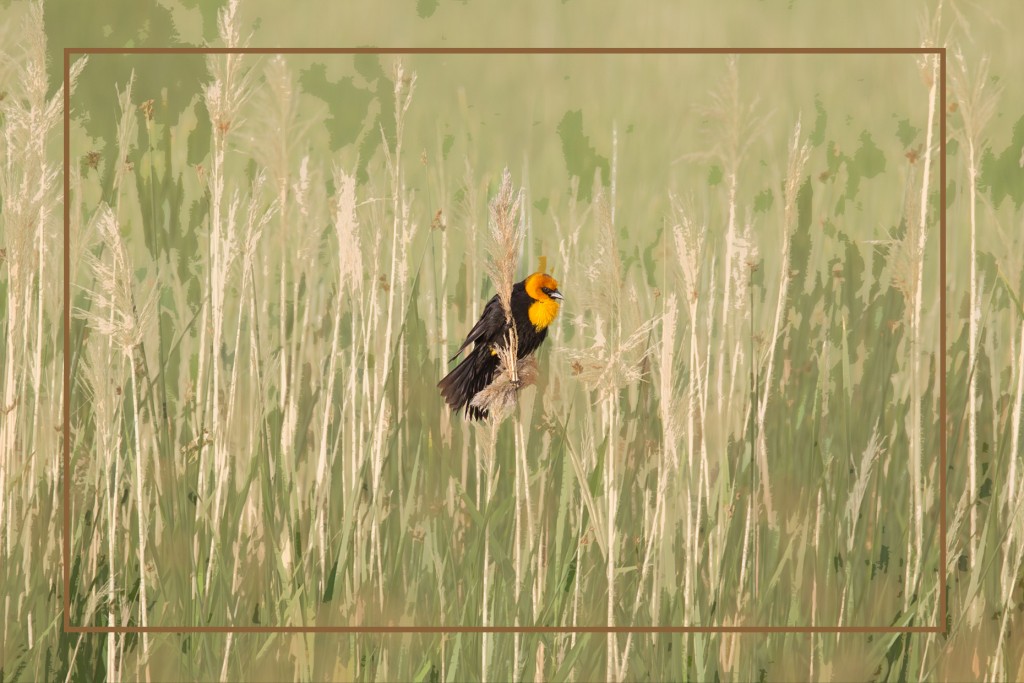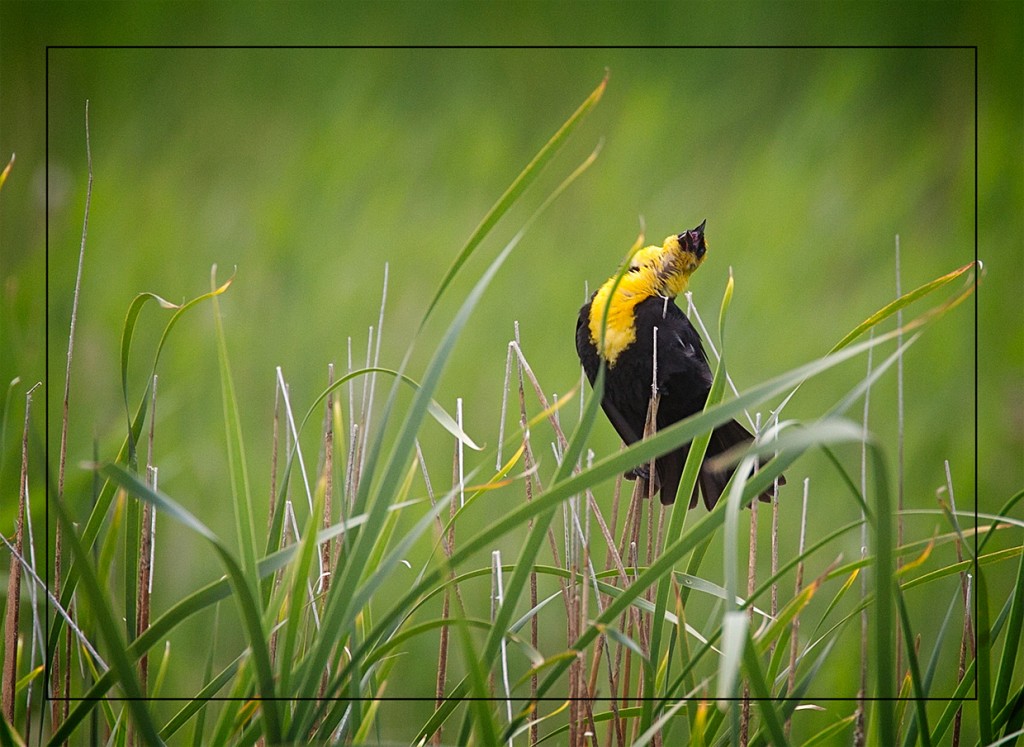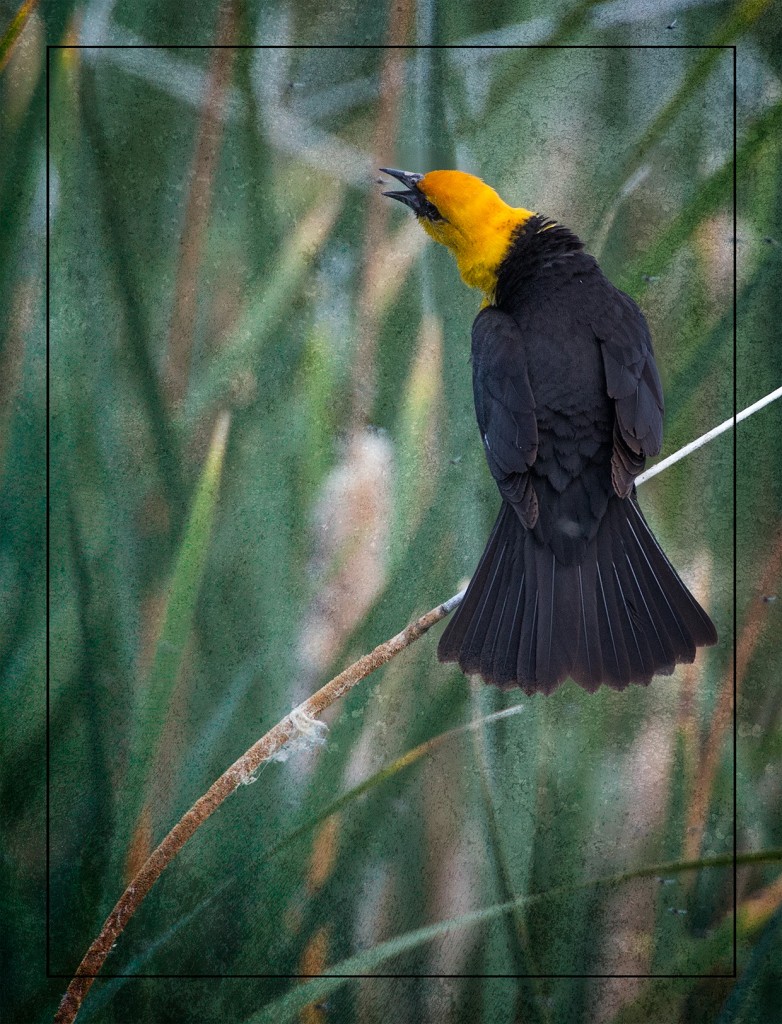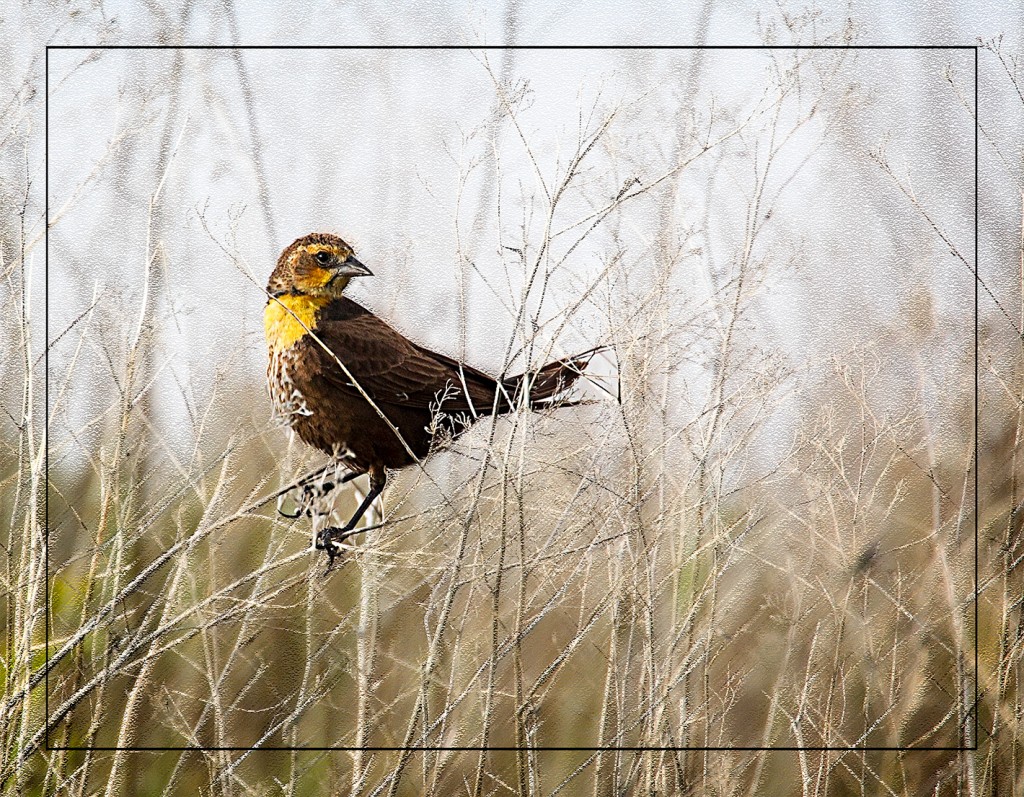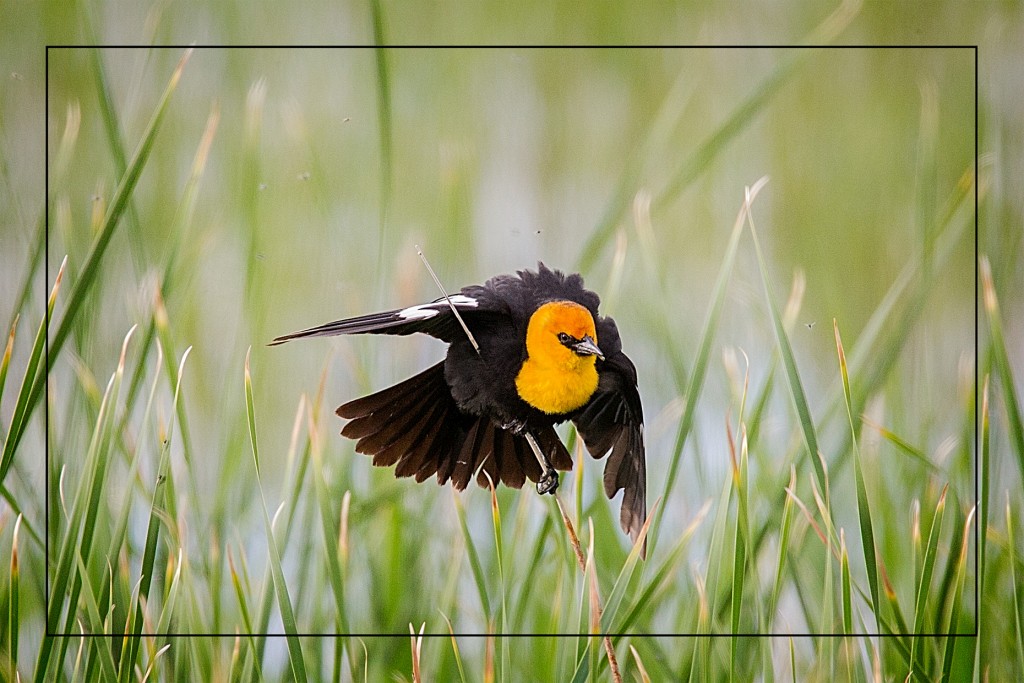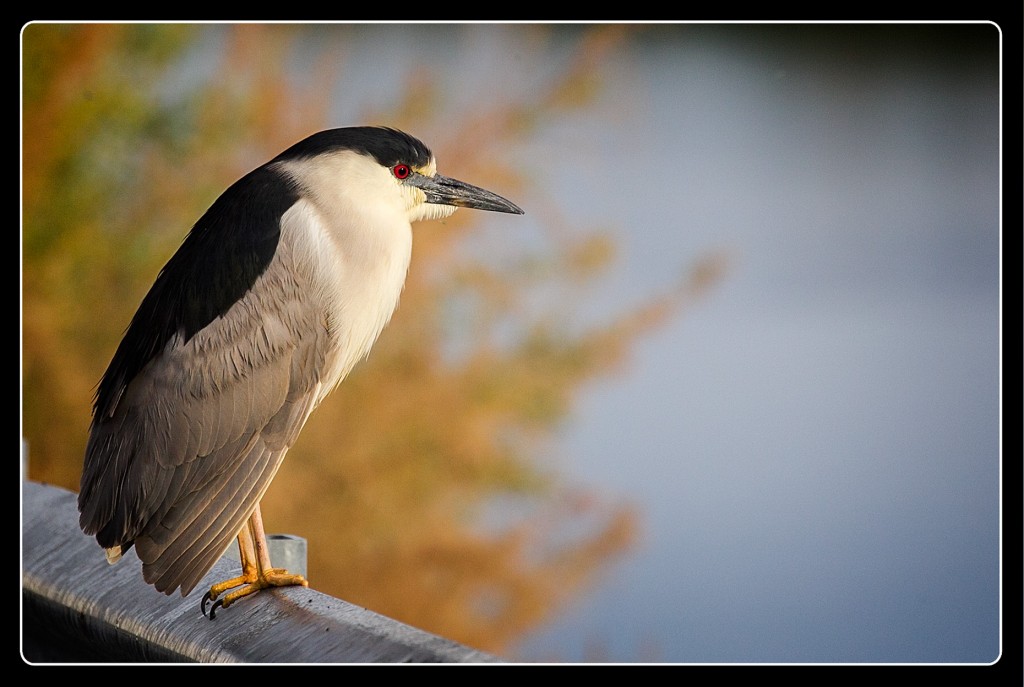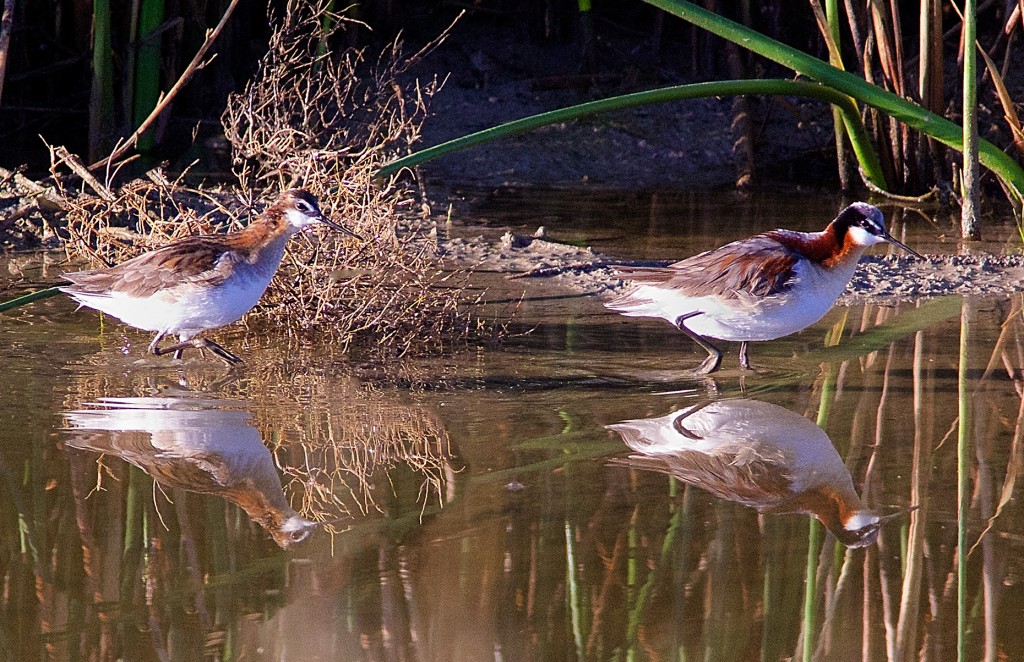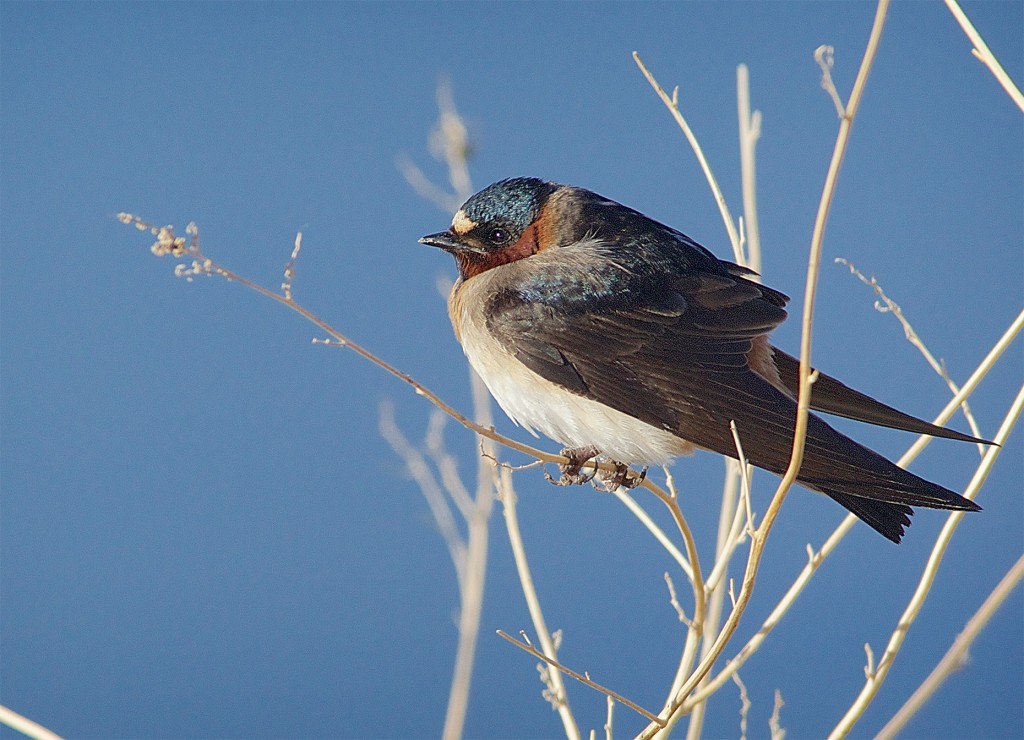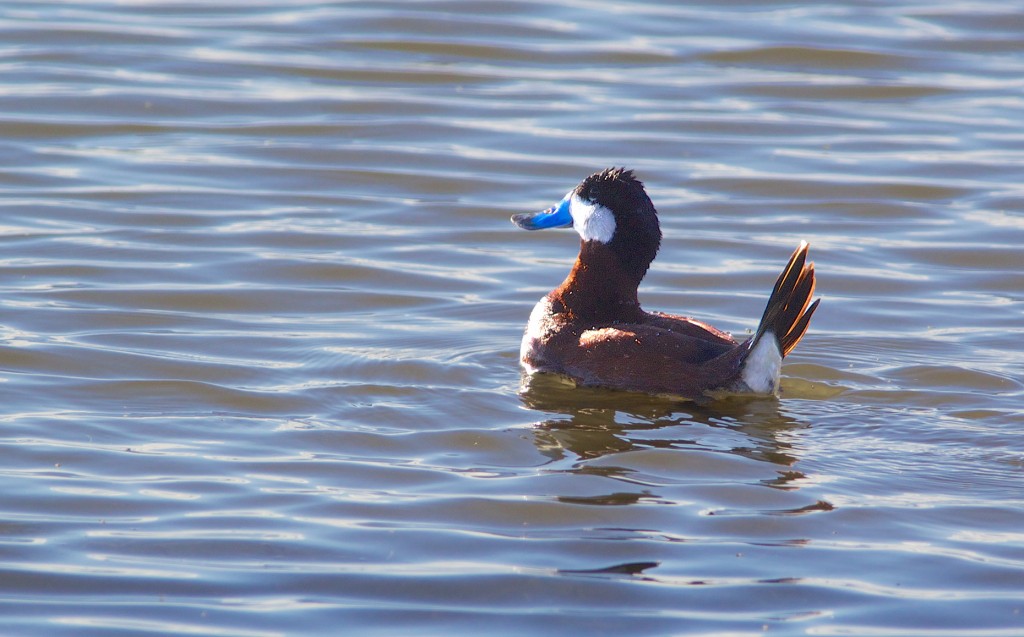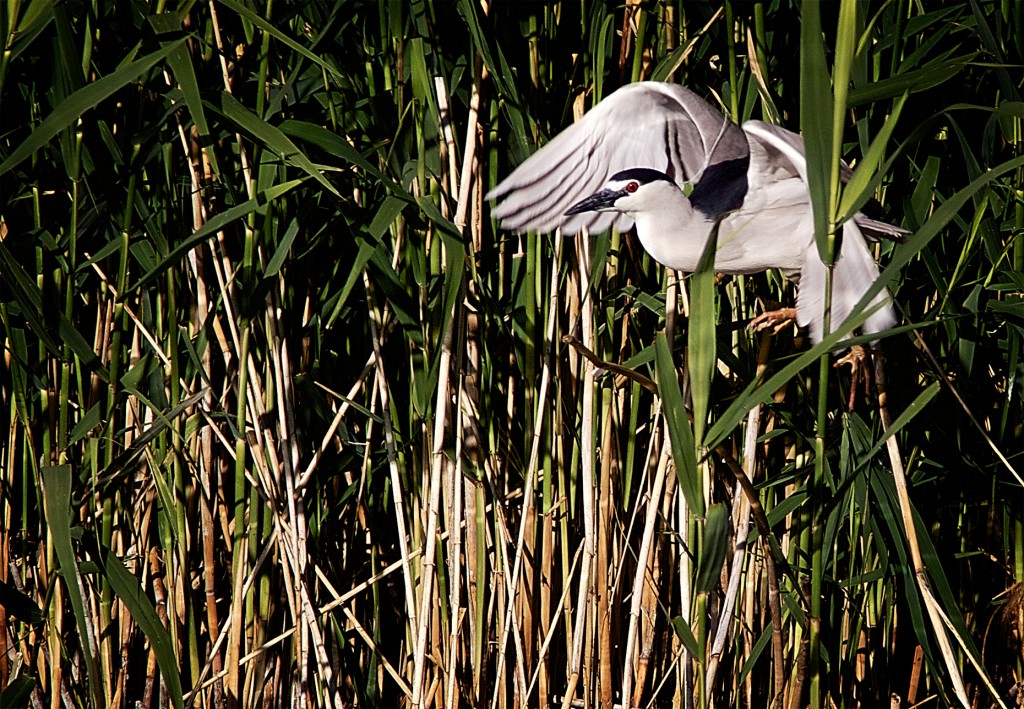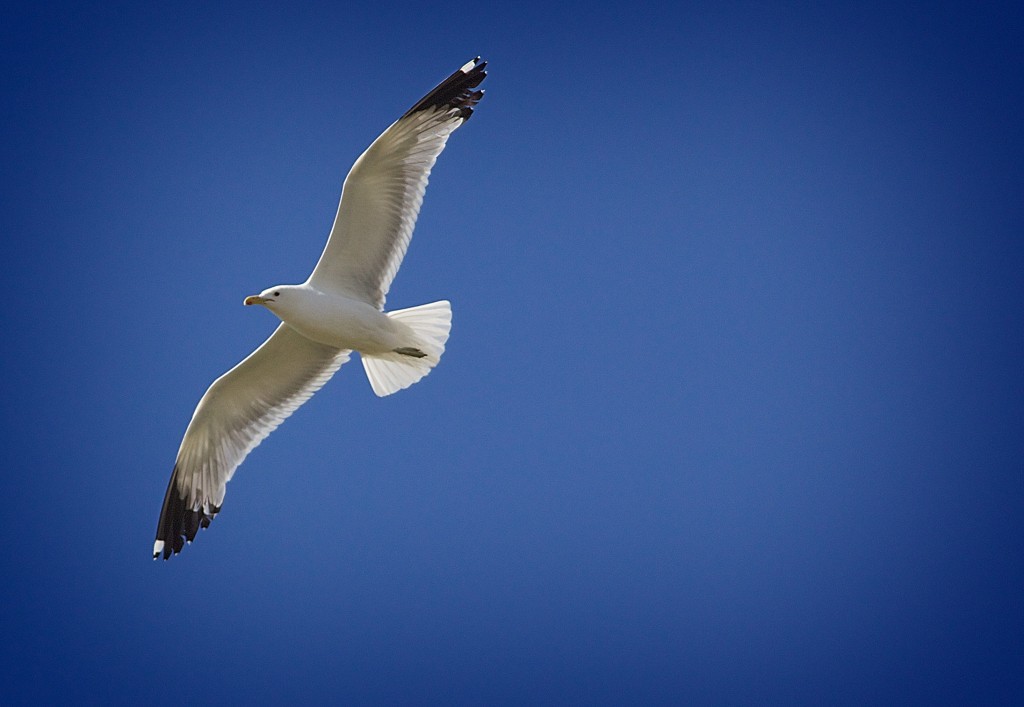After a glorious trip to Bear River Migratory Bird Refuge last summer I didn’t want to miss the chance to check it out in the winter when our trip required us to pass right by it. As it turned out, we were about ready for a stop after driving through Salt Lake City. With a long day’s drive still in front of us and questionable weather, I knew that we would have to make a quick, early morning stop if we were going to stop at all.
As it turned out, it was actually sunnier than when I visited it in the middle of June. Unfortunately, the sun was quite low on the horizon and the light was extremely orange-colored, making it harder than usual to identify birds that I seldom see in their winter dress.
At first I thought this might be a Ring-Necked Duck, but my bird guide doesn’t show this variation for Ring-Necked. It also looked a little like a Scaup, but my best guess is that it is probably a Redhead in eclipse plumage.
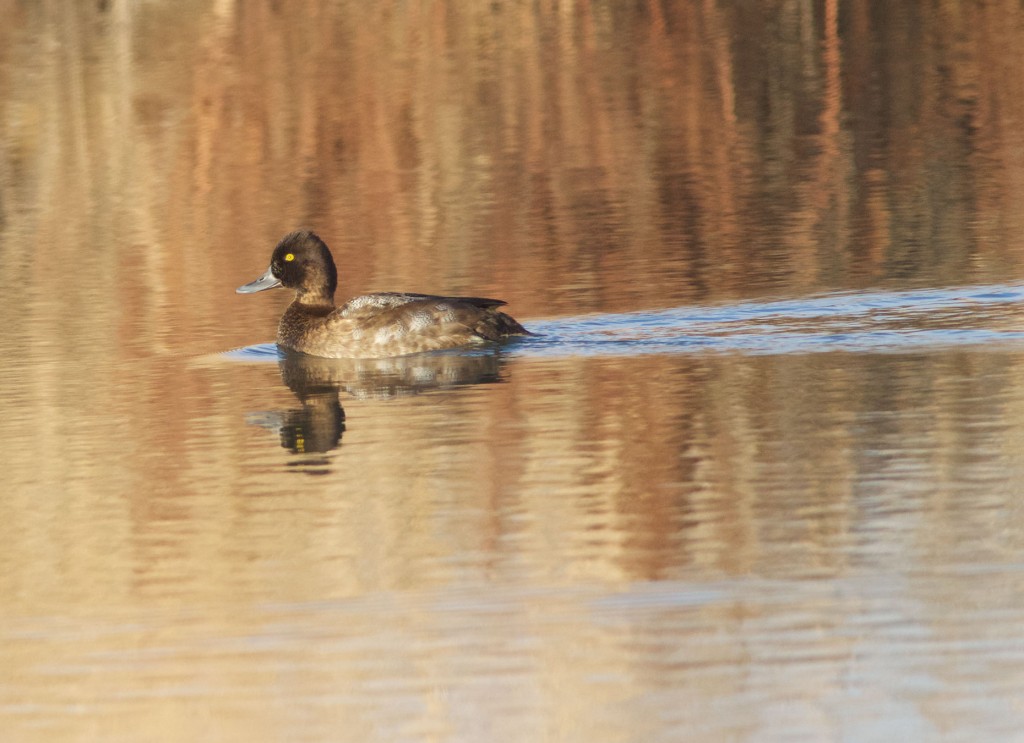
When we first saw these two grebes (I realized immediately they were grebes), I thought they must be an unknown variety, but, as it turns out, they were simply Pied Grebes in winter colors, something I seldom see, especially in the bright, morning sunshine.
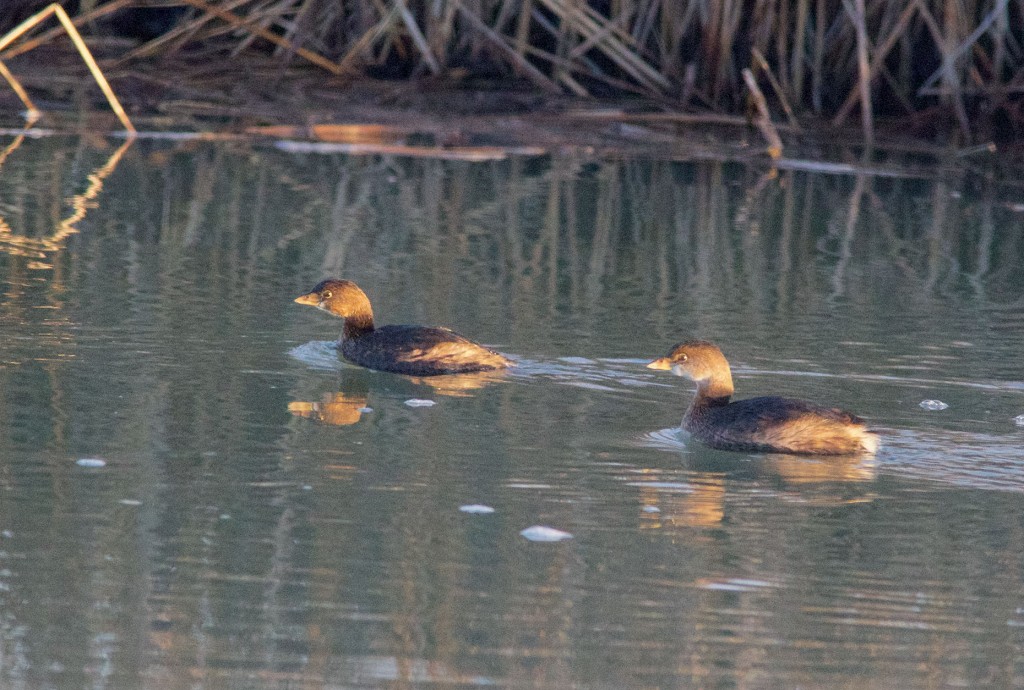
There was no doubt about these two because I spent over two years looking for one before I saw a whole flock of them near Santa Rosa. So it was a treat to see a pair of Canvasback ducks, even if they were much too far away to get a really good shot.

We saw so many Northern Harriers at the refuge I just assumed this was one as it swooped down and caught a mouse, but a quick look on screen made it clear that this was no Northern Harrier, though, again, I’m far from certain what it is. My best guess is that it’s a Rough-Legged Hawk.
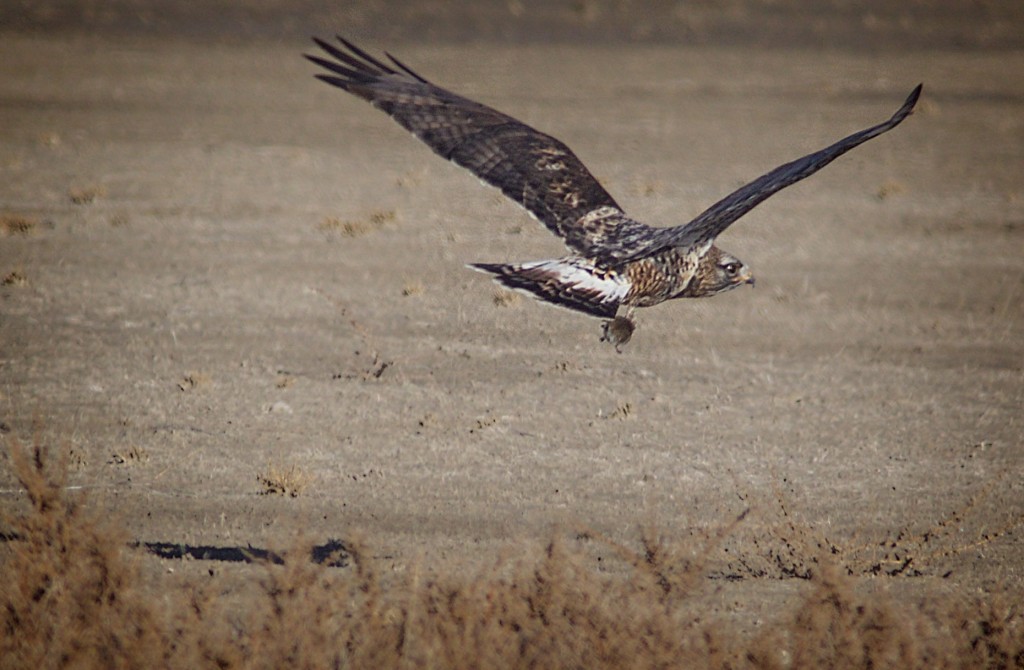
The thrill of the day, though, came just as we were finishing the auto-tour. As we were slowly scanning the lake I happened to glance down at the ground and see a white blur. I got Leslie to hand me the small lens since there was no way she could see what I was seeing from her side of the car. Luckily, this little Long-Tailed Weasel popped up from the foliage again,
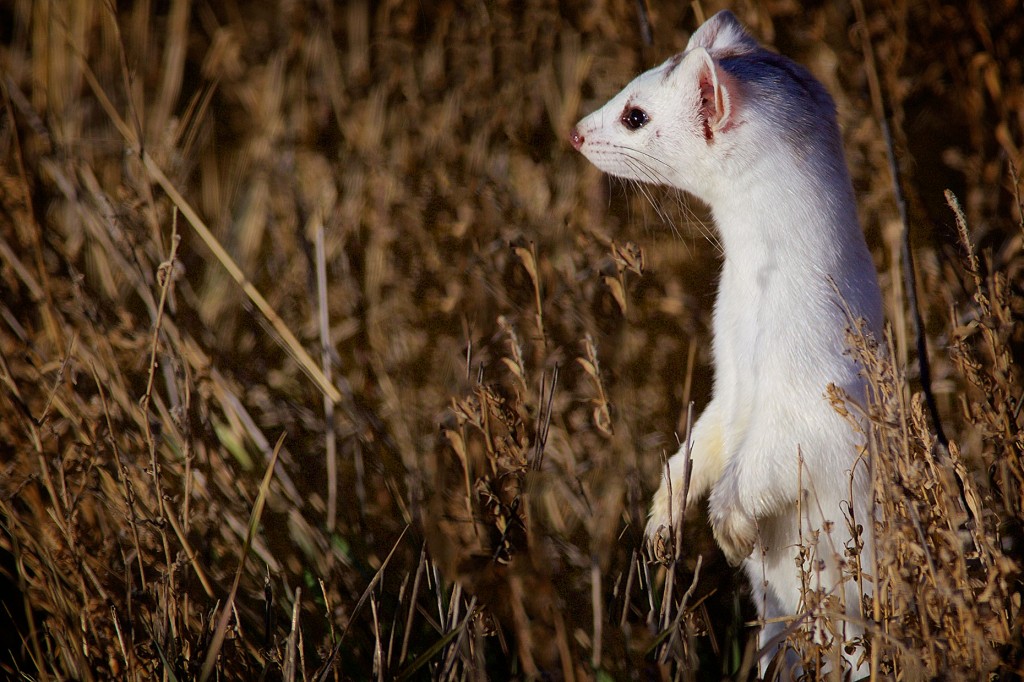
took a quick glance at me,
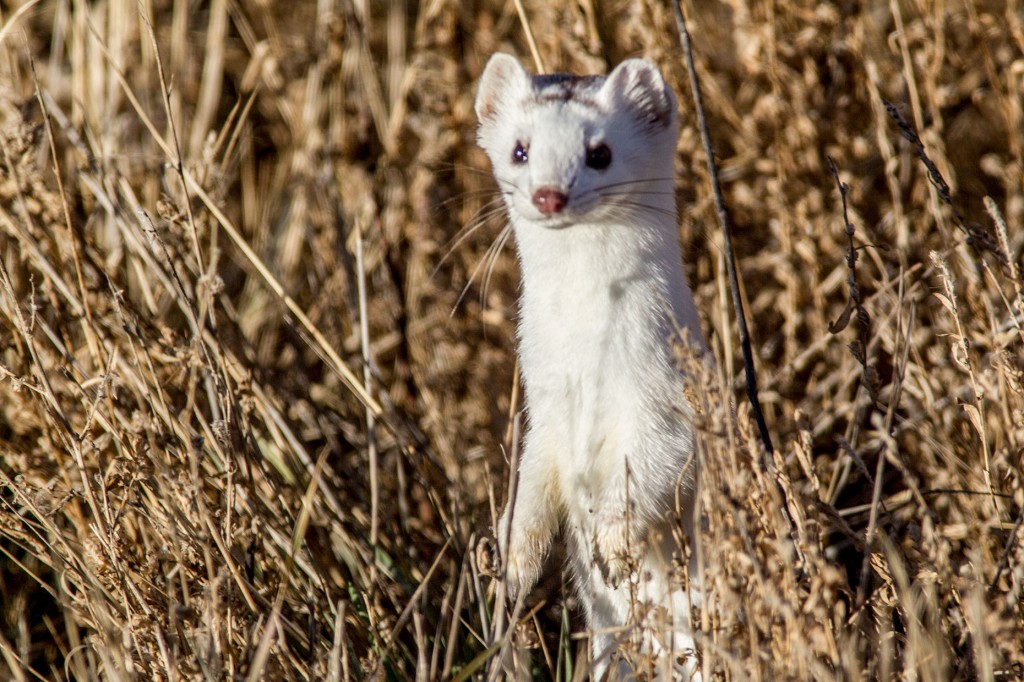
realized I was too old and slow to present any real danger and dashed out of the grass and retrieved a dead mouse that it must have dropped as I drove up. Unfortunately, he was right, I wasn’t nearly fast enough to get a shot of him as he picked the mouse up, even though I got a great view of him.
Although I wasn’t nearly as impressed with Big Bear as I was on my earlier visit, that two-minute adventure made my day, making it possible to bear the long drive home through, snow, sleet and hours of darkness.

